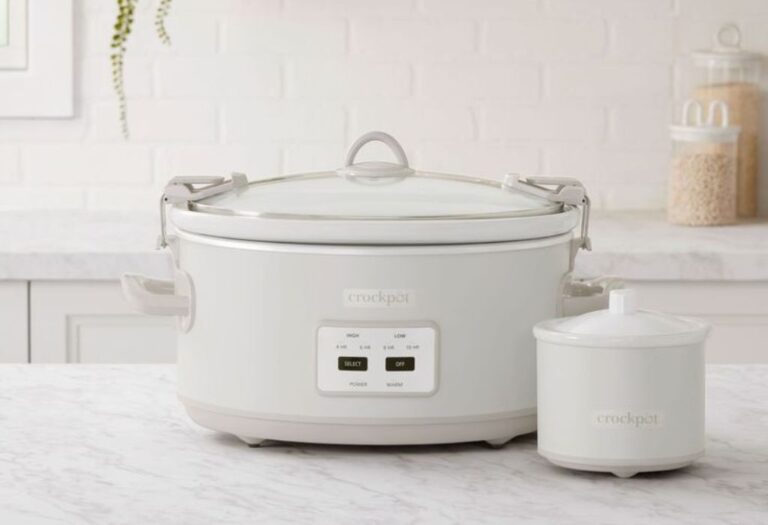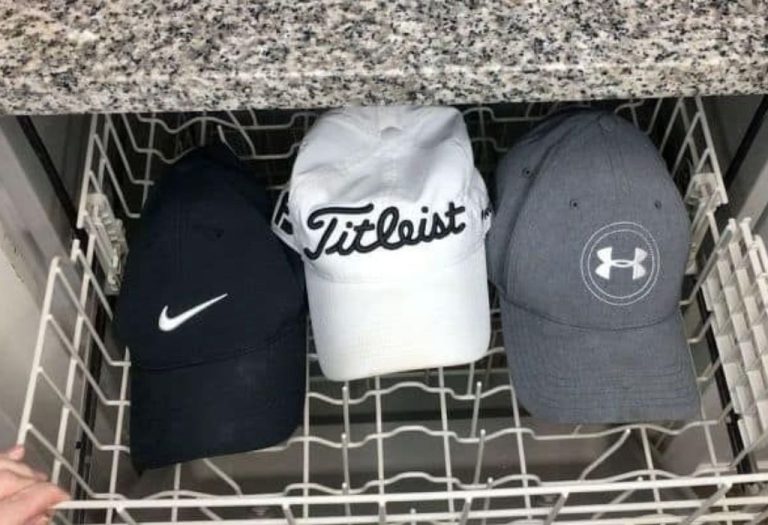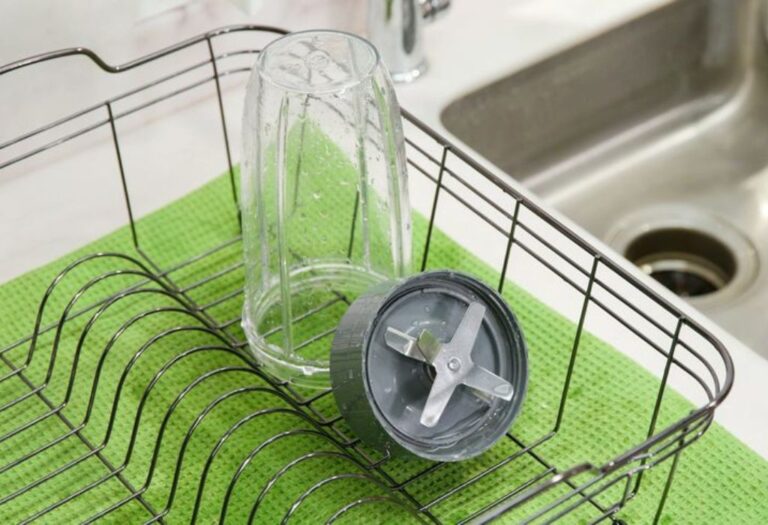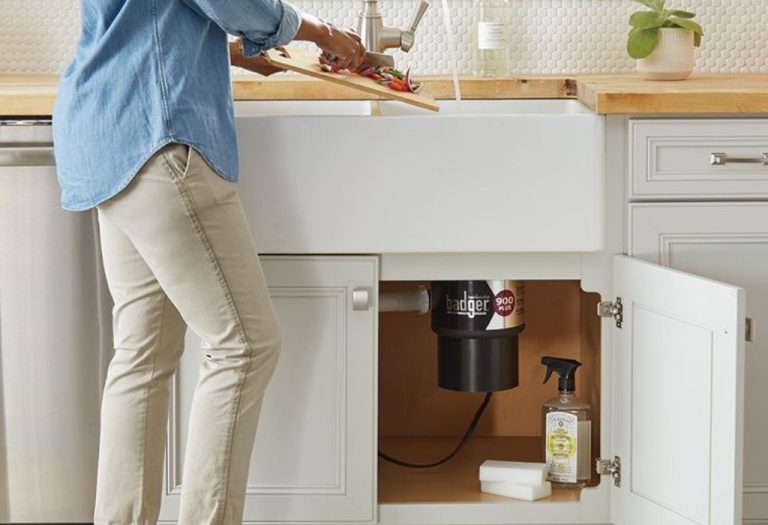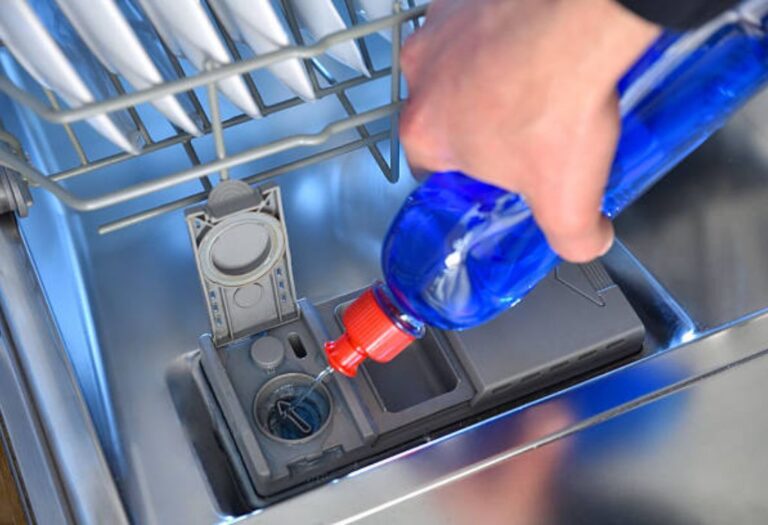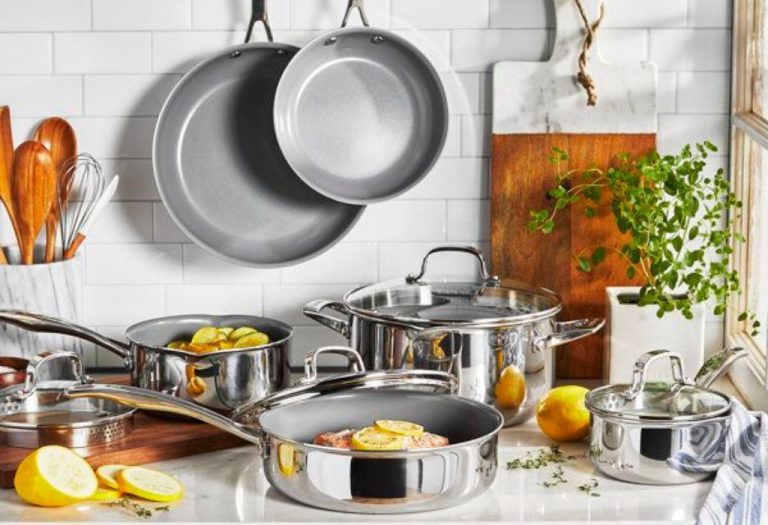A skillet hisses on the stovetop as the smell of garlic fills the air, but the excitement quickly fades when food sticks or burns. For many home cooks, the wrong pan can turn a simple recipe into a frustrating cleanup.
Choosing the right cookware often feels overwhelming with endless options on the market. Among the most debated materials, enamel and stainless steel stand out for their popularity and very different strengths.
This debate is not just about aesthetics or brand loyalty. The choice can shape how evenly heat spreads, how flavors develop, and even how safe food remains during cooking.
Home kitchens are busier than ever, with more people cooking at least five nights a week. According to a Pew Research study, the number of Americans preparing meals at home has risen sharply since 2020. This makes cookware decisions more relevant than ever.
At the same time, health concerns are driving people away from nonstick pans containing PFAS chemicals. Nearly all Americans have detectable PFAS in their blood, according to the Agency for Toxic Substances and Disease Registry. Both enamel and stainless steel are PFAS-free, giving them an edge in today’s health-conscious kitchens.
The key question is not which pan looks better but which performs best in everyday scenarios. Is enamel or stainless steel cookware better for quick weeknight meals, slow braises, or high-heat searing?
This article explores how each material handles heat, durability, safety, and long-term value. By the end, readers will have the clarity to choose cookware that makes cooking smoother, healthier, and more enjoyable.
Quick Answer—Is Enamel or Stainless Steel Cookware Better?
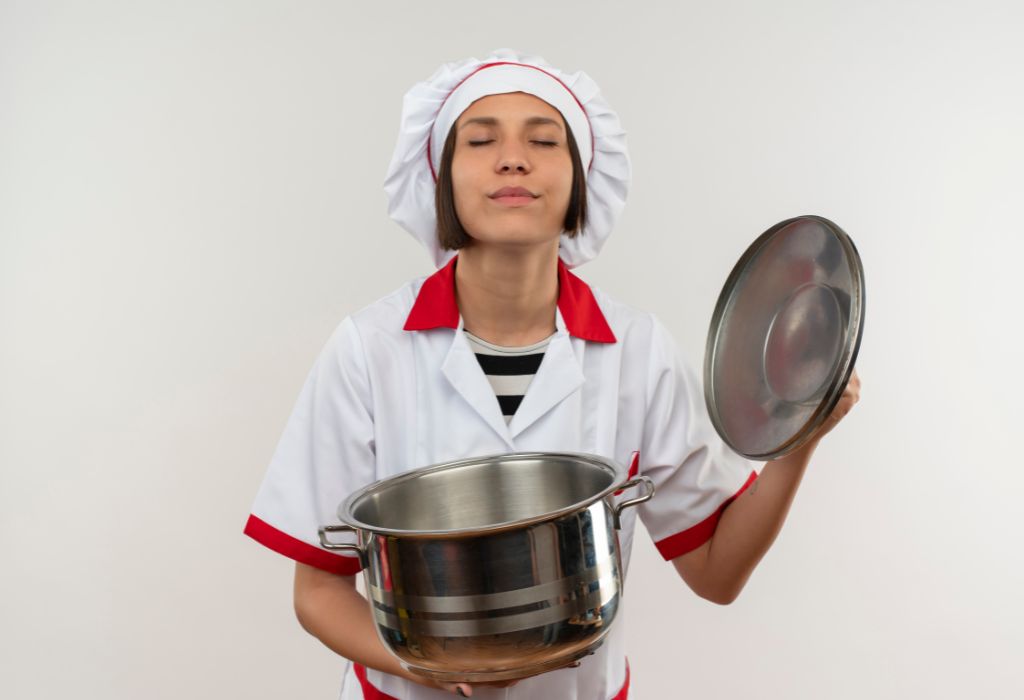
Both enamel and stainless steel have distinct advantages depending on cooking style and meal type. Enamel, often used in cast iron Dutch ovens, excels at heat retention and slow cooking. Stainless steel heats quickly and evenly, making it ideal for searing, sautéing, and deglazing.
Choosing the right material affects not just cooking performance but also safety and longevity. While enamel provides consistent heat for braises and stews, stainless steel offers versatility and easier maintenance.
Weight and care requirements are additional factors to consider when selecting the perfect pan.
Is enamel or stainless steel cookware better for weeknight meals?
Stainless steel is faster to heat and easier to maneuver, making it ideal for quick dinners.
Is enamel or stainless steel cookware better for braises?
Enamel retains heat evenly and holds moisture, perfect for slow-cooked stews.
Is enamel or stainless steel cookware better for searing steak?
Stainless steel withstands high heat and creates a crisp fond for deglazing.
Is enamel or stainless steel cookware better for acidic foods?
Both are non-reactive, but enamel’s glass coating resists acids naturally.
Is enamel or stainless steel cookware better for induction cooktops?
Modern stainless with a magnetic base and enameled cast iron both work efficiently on induction surfaces.
How Each Material Works (Heat Science & Cladding)
Understanding how enamel and stainless steel handle heat is key to choosing the right cookware.
Enamel-coated cast iron absorbs heat slowly but retains it for long periods, making it ideal for slow-cooked dishes. Stainless steel heats quickly, especially when bonded with an aluminum or copper core, which ensures even heat distribution and minimal hot spots.
The structure of stainless steel pans, often tri-ply or 5-ply, allows fast temperature changes and precise cooking control.
Enamel, with its thick cast iron base and glassy coating, delivers steady heat over time but reacts slower to sudden temperature shifts. These differences affect everything from browning meat to simmering delicate sauces.
Q&A Section
What is stainless steel “clad”?
Clad stainless steel has layers of aluminum or copper sandwiched between steel, improving heat conductivity.
Does enamel affect heat transfer?
Yes, the enamel coating slows response time, but the cast iron underneath retains heat exceptionally well.
Why do some stainless steel pans stick?
Sticking occurs because stainless is not nonstick; proper preheating and oil create a temporary nonstick surface.
Which material has fewer hot spots?
High-quality clad stainless steel minimizes hot spots, while enameled cast iron evens out once fully heated.
Can enamel crack or chip under heat?
Thermal shock or sudden temperature changes can chip enamel, exposing the iron underneath.
Performance in Common Techniques
Different cooking techniques highlight the strengths and limitations of enamel and stainless steel cookware. Enamel excels at slow, low-and-slow methods like braising, stewing, and baking bread. Stainless steel shines in high-heat techniques such as searing, sautéing, and deglazing because it responds quickly to temperature changes.
Choosing the right material ensures better results and easier cleanup. While enamel locks in moisture and flavor over time, stainless steel allows precise control for delicate sauces and quick-cooking dishes.
Q&A Section
Best for high-heat searing and deglazing?
Stainless steel handles intense heat and creates fond for flavorful sauces.
Best for slow soups and no-peek stews?
Enamel-coated cast iron retains heat and distributes it evenly for consistent cooking.
Best for delicate sauces?
Stainless steel heats quickly, giving control to prevent burning or curdling.
Best for oven-to-table cooking?
Enamel maintains steady heat, making it ideal for serving directly from the oven.
Best for cooking eggs?
Neither is fully nonstick; technique is important, or a separate nonstick pan may be preferred.
Health & Safety: PFAS-Free Choices, Metal Leaching & Allergies

Cookware choice affects not only cooking performance but also health and safety. Both enamel and stainless steel are PFAS-free alternatives to traditional nonstick pans, reducing exposure to potentially harmful chemicals. Stainless steel may leach trace amounts of nickel or chromium, but these are generally safe for most people. Enamel surfaces are non-reactive, protecting food from chemical interactions and maintaining flavor integrity.
Proper care is important for safety. Chipped enamel may expose cast iron underneath, which is safe in small amounts but can rust if neglected. High-quality stainless steel resists corrosion and avoids chemical coatings that may break down over time.
Is enamel or stainless steel cookware better for avoiding PFAS?
Both are PFAS-free and do not use PTFE or PFOA coatings.
Can stainless steel leach metals into food?
Trace nickel or chromium can leach, especially with acidic foods, but amounts are typically minimal.
Can enamel chip or crack?
Yes, avoid sudden temperature changes or metal utensils to prevent chipping.
Are both materials safe for acidic foods like tomatoes?
Yes, enamel resists acids naturally, and stainless steel is non-reactive when high-quality.
Any overheating risks?
Both can handle high heat, but empty stainless may warp, and enamel can develop thermal cracks if heated too quickly.
Durability, Maintenance & Cleaning
Durability and ease of care are essential factors when choosing cookware. Stainless steel is highly resistant to corrosion, scratches, and warping, making it suitable for everyday use. Enamel requires careful handling to prevent chipping, but with proper care, it can last decades.
Maintenance routines differ between the two materials. Stainless steel is generally dishwasher-safe and tolerates harsh scrubbing, while enamel is best hand-washed and protected from abrupt temperature changes. Weight and handle comfort also play a role, as enameled cast iron is heavier and can be more challenging to lift when full.
Which lasts longer with less maintenance?
Stainless steel is more durable and easier to maintain over time.
Which is easier to clean after braises or stews?
Enamel’s smooth surface helps with cleanup, but stainless steel may require soaking or a gentle abrasive for stuck-on food.
Dishwasher safe?
Most stainless steel pans are dishwasher-safe, while enamel usually requires hand washing to protect the coating.
Is enamel cookware heavy to handle?
Yes, enameled cast iron is significantly heavier than comparable stainless steel pans.
Does stainless steel resist scratches and corrosion?
High-quality stainless steel resists scratches, corrosion, and discoloration, maintaining its appearance for years.
Cost, Value & Brands
Cost and value are important considerations when choosing cookware. Stainless steel ranges from affordable to premium, with tri-ply or 5-ply options offering even heating and long-term durability. Enamel, particularly enameled cast iron, tends to be more expensive upfront but can last for decades when properly cared for.
Brand reputation also influences both performance and longevity. Popular stainless steel brands include All-Clad, Made In, and Hestan, known for consistent heat distribution. Enameled cast iron favorites include Le Creuset, Staub, and Lodge, offering durability, oven-to-table presentation, and high-quality enamel coatings.
Q&A Section
Best long-term value for a first pan?
A 10–12 inch clad stainless steel skillet covers most cooking needs and lasts for years.
Best heirloom piece?
An enameled Dutch oven from reputable brands like Le Creuset or Staub is ideal for long-term use.
Starter set strategy?
A combination of a stainless steel skillet and a medium enameled Dutch oven covers most everyday tasks.
Is paying extra for copper cores worth it?
Yes, copper cores improve heat precision, though aluminum cores are sufficient for most home cooks.
Do expensive brands always perform better?
Quality materials and proper construction matter more than brand alone; premium brands often provide warranties and longevity.
Cooktop Compatibility (Gas, Induction, Electric, Oven)
Cookware must match the cooktop for optimal performance and safety. Stainless steel works well on gas, electric, and induction, especially when it has a magnetic base. Enameled cast iron also works on all cooktops, including induction, but its weight can scratch glass surfaces if not handled carefully.
Oven compatibility is another factor to consider. Stainless steel can usually withstand temperatures up to 500°F, depending on handle material. Enamel-coated cast iron can handle similar temperatures but must avoid sudden thermal changes to prevent cracking.
Q&A Section
Is enamel or stainless steel cookware better for induction?
Both work efficiently if stainless steel is magnetic and enamel cast iron is used properly.
What are the maximum oven-safe temperatures?
Stainless steel often tolerates 500°F or more; enamel varies by brand but usually handles 400–450°F safely.
Is it safe to use enamel on glass cooktops?
Yes, but avoid dragging heavy pans to prevent scratches.
Can both materials be used under the broiler?
Stainless steel is generally broiler-safe; enamel depends on the manufacturer’s guidelines.
Does induction cooking affect performance?
Both materials work well; stainless steel responds faster to temperature changes, while enamel retains heat longer.
Sustainability & Non-Toxic Angle
Sustainability and safety are increasingly important in cookware choices. Stainless steel is fully recyclable, highly durable, and retains its quality over decades. Enamel-coated cast iron, when cared for properly, can also last a lifetime, reducing waste compared to disposable or short-lived pans.
Non-toxic cooking surfaces are essential for health-conscious kitchens. Both enamel and stainless steel are PFAS-free, avoiding the harmful chemicals found in traditional nonstick coatings. Choosing these materials ensures safer cooking without compromising performance or flavor.
Q&A Section
Which is more sustainable long-term?
Stainless steel is recyclable, while enamel’s longevity makes it a durable choice if handled carefully.
Are there any harmful chemicals to avoid?
Both materials are free from PFAS, PTFE, and PFOA, making them safe for everyday cooking.
Does induction cooking affect sustainability?
No, but stainless steel’s fast response on induction can save energy compared to slower-heating pans.
Can enamel or stainless steel be considered non-toxic?
Yes, both are considered safe and do not release harmful chemicals under normal cooking conditions.
Does long-term use affect safety?
Proper maintenance ensures both materials remain safe and effective for decades.
Side-by-Side Use Cases (What to Buy First)
Choosing the right cookware depends on typical cooking tasks and kitchen goals. A stainless steel skillet handles high-heat searing, sautéing, and quick sauces, making it versatile for everyday meals. Enamel-coated cast iron excels at braises, stews, and oven-to-table dishes, providing consistent heat and moisture retention.
Starting with a minimal setup can cover most cooking needs. Combining one stainless steel skillet with a medium enameled Dutch oven allows preparation of 90% of common recipes, from weeknight dinners to slow-cooked meals.
Q&A Section
What is the minimalist setup for a home kitchen?
A 10–12 inch stainless steel skillet and a 5–7 qt enameled Dutch oven cover most cooking tasks.
Which should be purchased second?
A medium enameled Dutch oven provides slow-cooking, baking, and oven-to-table versatility.
Which is better for delicate fish or eggs?
Use stainless steel with proper technique, or a separate nonstick pan if preferred.
Is enamel suitable for baking bread?
Yes, enameled Dutch ovens retain steam and heat evenly for perfect oven spring.
Should upgrades include copper-core options?
Optional; copper cores improve precision but are not essential for most home cooks.
Care & Troubleshooting (Sticking, Stains, Chips)
Proper care extends the life and performance of cookware. Stainless steel requires preheating and correct oiling to prevent food from sticking. Enamel needs gentle handling, avoiding metal utensils and sudden temperature changes to prevent chipping.
Stains and discoloration can occur but are generally easy to fix. Stainless steel can be cleaned with mild abrasives or baking soda, while enamel benefits from soaking and non-abrasive cleaners. Regular maintenance ensures optimal performance and safety over time.
Q&A Section
How to prevent stainless steel from sticking?
Preheat the pan, add oil, and allow proteins to release naturally before stirring.
How to remove rainbow discoloration on stainless steel?
Use a stainless steel cleaner or a vinegar rinse to restore shine.
Can enamel stains be removed?
Yes, simmering baking soda in water or using mild non-abrasive cleaners removes most stains.
What to do if enamel chips?
Minor exterior chips are usually cosmetic; deep interior chips may require replacement to avoid rust.
Can overheating damage enamel or stainless steel?
Empty stainless steel can warp under extreme heat, and enamel can crack or craze if subjected to sudden temperature changes.
Buyer’s Guide Checklist (AEO-Optimized Answers)
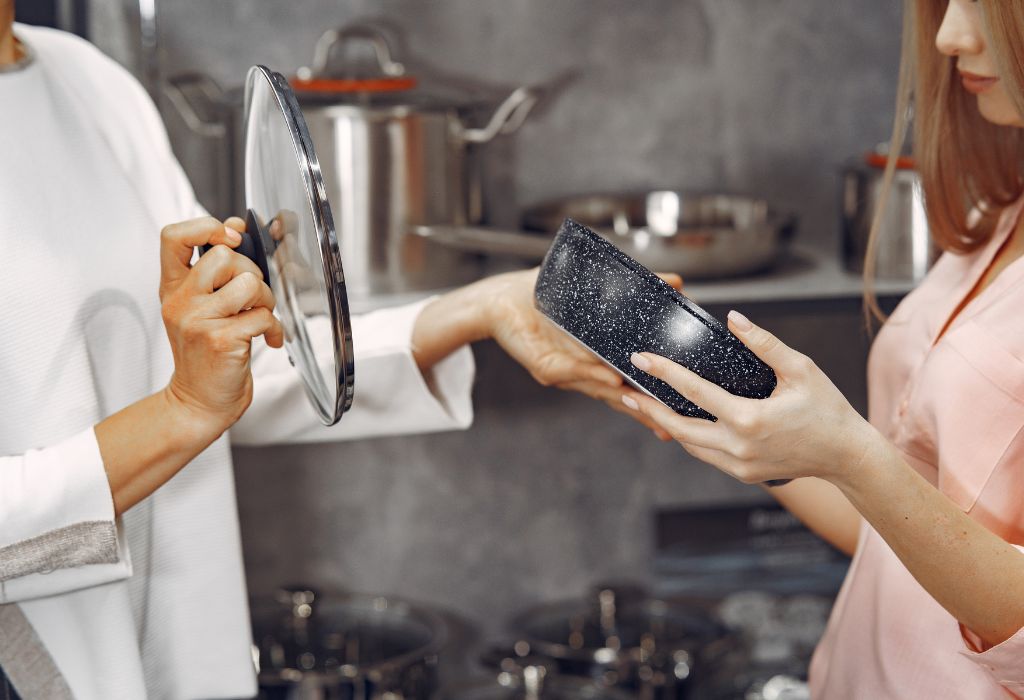
Choosing the right cookware requires attention to multiple factors beyond material. Size, weight, handle comfort, lid fit, core construction, oven-safe temperature, induction compatibility, and warranty are key considerations. A well-chosen pan ensures performance, safety, and longevity.
This checklist helps buyers select cookware that matches their kitchen needs and cooking style. Combining one high-quality stainless steel skillet with an enameled Dutch oven covers most tasks while optimizing value.
Q&A Section
Is tri-ply stainless steel sufficient?
Yes, tri-ply provides even heat; 5-ply adds stability and further minimizes hot spots.
Aluminum or copper core—which is better?
Aluminum offers value and fast heating; copper improves precision but increases cost.
What size Dutch oven should be purchased first?
A 5–7 qt enameled Dutch oven fits most families and cooking needs.
What skillet size is ideal?
A 10–12 inch stainless steel skillet covers most everyday cooking tasks.
Is warranty important when buying cookware?
Yes, it ensures long-term performance and protects against manufacturing defects.
Final Verdict—Is Enamel or Stainless Steel Cookware Better for Your Kitchen?
Choosing between enamel and stainless steel depends on cooking style, convenience, and long-term needs. Stainless steel excels in speed, searing, and precise temperature control, making it ideal for everyday meals. Enamel-coated cast iron provides unmatched heat retention and moisture control, perfect for braises, stews, and oven-to-table dishes.
A combination of both materials covers most cooking scenarios efficiently. Starting with a stainless steel skillet and adding a medium enameled Dutch oven ensures versatility, safety, and durability. Both materials are PFAS-free, non-reactive, and built to last, making them safe and sustainable options for modern kitchens.
Q&A Section
Which pan should be bought first?
A 10–12 inch stainless steel skillet is versatile and ideal for everyday cooking.
Which should be added second?
A 5–7 qt enameled Dutch oven handles slow cooking, baking, and oven-to-table meals.
Are copper-core upgrades necessary?
Optional; copper cores offer heat precision but are not essential for most home cooks.
Are both materials PFAS-free?
Yes, both enamel and stainless steel cookware avoid PFAS, PTFE, and PFOA coatings.
Which material is better for general home use?
A combination of stainless steel and enamel provides the best balance of speed, heat retention, and versatility.
I’m Emma J. Caldwell, the founder, lead writer, and home-cooking enthusiast behind KitchenGuideCo.com. With a background in culinary arts and over a decade of cooking experience in both professional and personal kitchens, I created this platform to demystify recipes, offer smart kitchen gadget reviews, and guide readers through meal prep with confidence and clarity.

